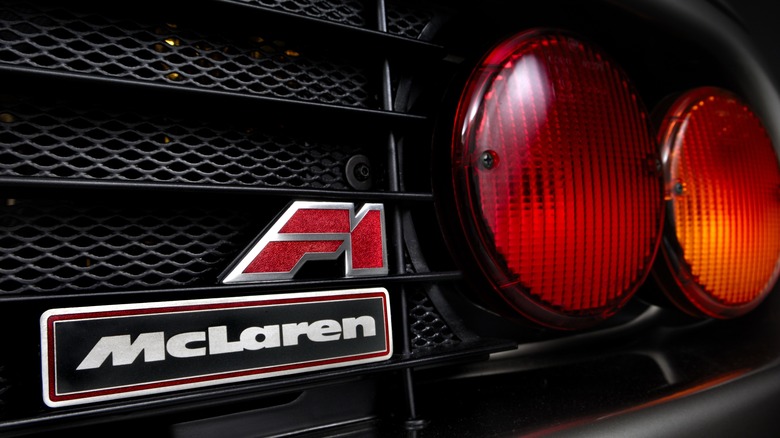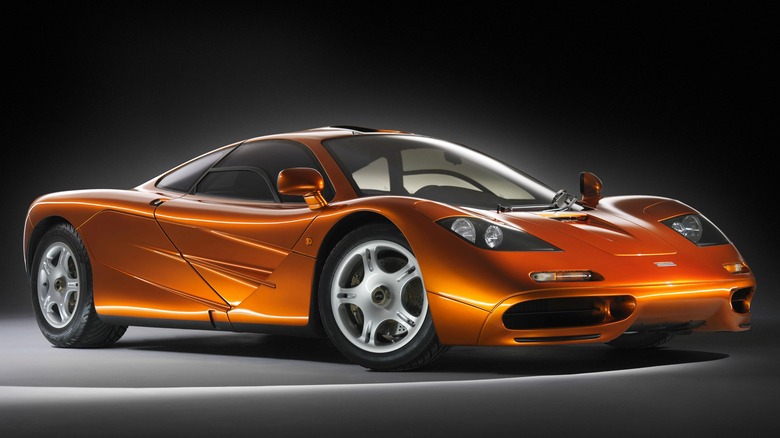Here's How Fast The McLaren F1 Really Is
It's a bit of a cliche to state that the McLaren F1 is one of the most legendary and important supercars to ever exist. It's a bundle of "world's most" and "world's first" superlatives bundled up into a car that's objectively stunning to behold. It's the car that turned McLaren into a company that made race cars, into one that made race cars that had license plates and turn signals. Despite only 106 hand-built cars ever leaving the factory, celebrities from Rowan Atkinson of Mr. Bean fame to Elon Musk have owned an F1.
Compared to the Lamborghini Aventador, Ferrari LaFerrari, and even McLaren's own Senna supercar, the F1 looks ever-so-slightly tame to the uninitiated. The exterior barely hides the fact that the F1 is ridiculously fast. The car came out almost 30 years ago and produces numbers that would make supercars from today give up the ghost.
Record breaker
But just how fast is the F1? Whatever your definition of fast is, the McLaren exceeds just about every metric. When it was reviewed by Car and Driver in 1994, the F1 smashed essentially every automotive speed record that existed at the time and basically made-up new categories to excel in.
For top speed, the F1 was capable of "at least" 230 miles per hour (via Car and Driver). That's incredibly fast now with only Bugatti exceeding that limit. In 1994, other supercars were practically standing still. Zero-to-60 is accomplished in a scant 3.2 seconds, a time that's blindingly fast even today. In 2022, that time is only topped by cars like the Porsche 918 and Dodge Challenger SRT Demon — two cars that use their own respective forms of mechanical devilry to accelerate faster than reason would dictate. The F1 only takes 28 seconds to accelerate to 200 miles per hour. For comparison, that's a few seconds longer than it takes the Zastava Yugo to reach highway speeds.
Still fast in 2022
The McLaren achieved these astonishing numbers with the help of its naturally aspirated 6.1-liter V12 provided by BMW. The engine bay was lined with pure gold to better reflect heat. It was capable of 618 horsepower and 479 ft-lbs of torque, according to Car and Driver. In today's world of 700-plus horsepower trucks and muscle cars, just over 600 horsepower seems almost quaint. But the F1 doesn't use any fancy turbochargers or other forms of forced induction.
Designed by Gordon Murray, the F1 is also incredibly light, just over 2,500 pounds. For comparison, a new Toyota Corolla weighs over 2,900 pounds. That incredible feat of weight-saving is mostly due to a carbon fiber chassis that, according to McLaren, took over 3,000 man hours to build for every car that left the factory. To stop, the F1 uses computer-controlled airbrakes as McLaren decided that more conventional braking systems weren't enough to gracefully slow the car when it was going over 200 miles per hour.
Whatever definition you may use for a "fast" car, the McLaren F1 fits that definition. It's worth repeating the fact that the F1 is almost 30 years old and still stacks up against the best of the best automotive record breakers of today.


